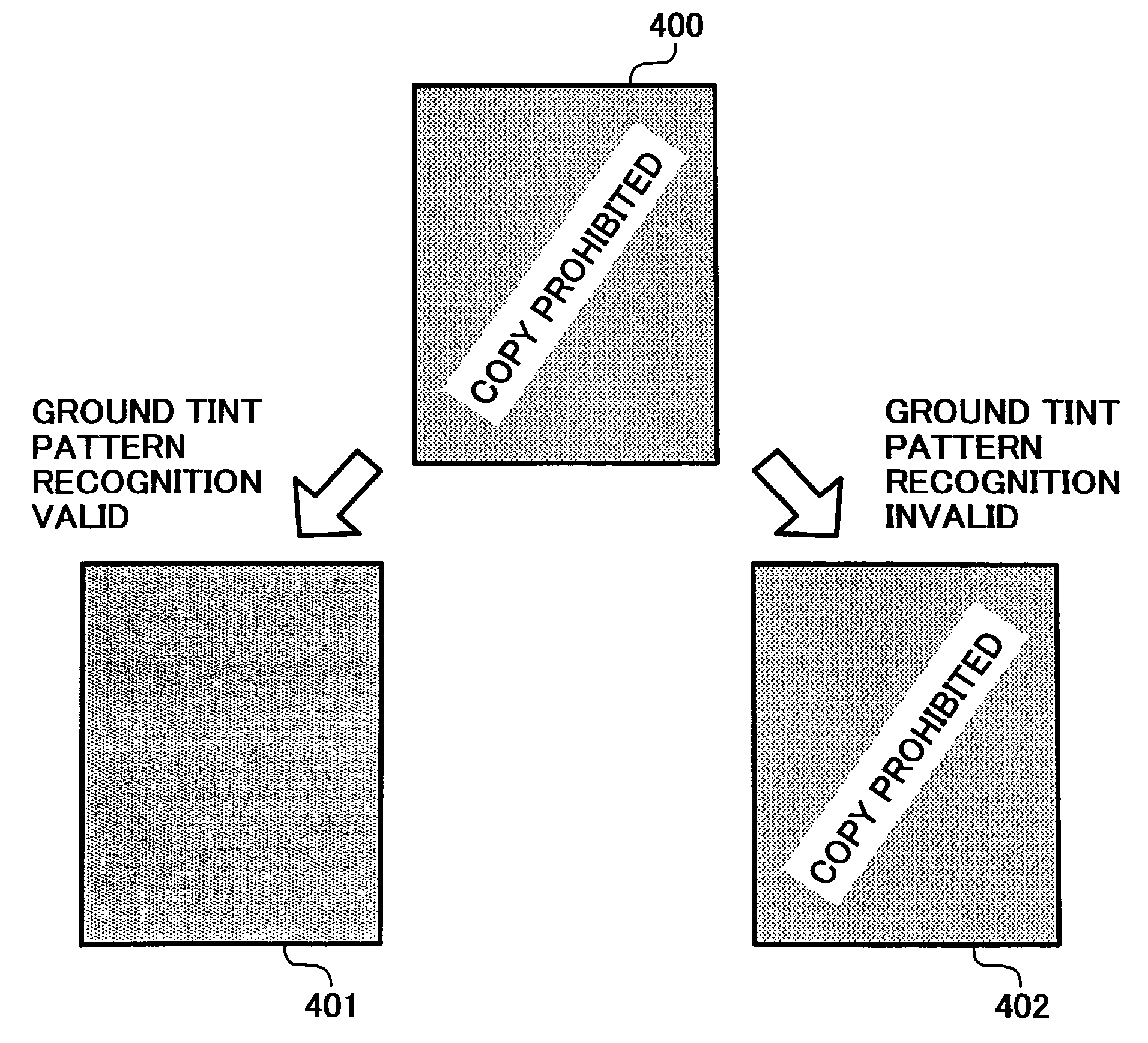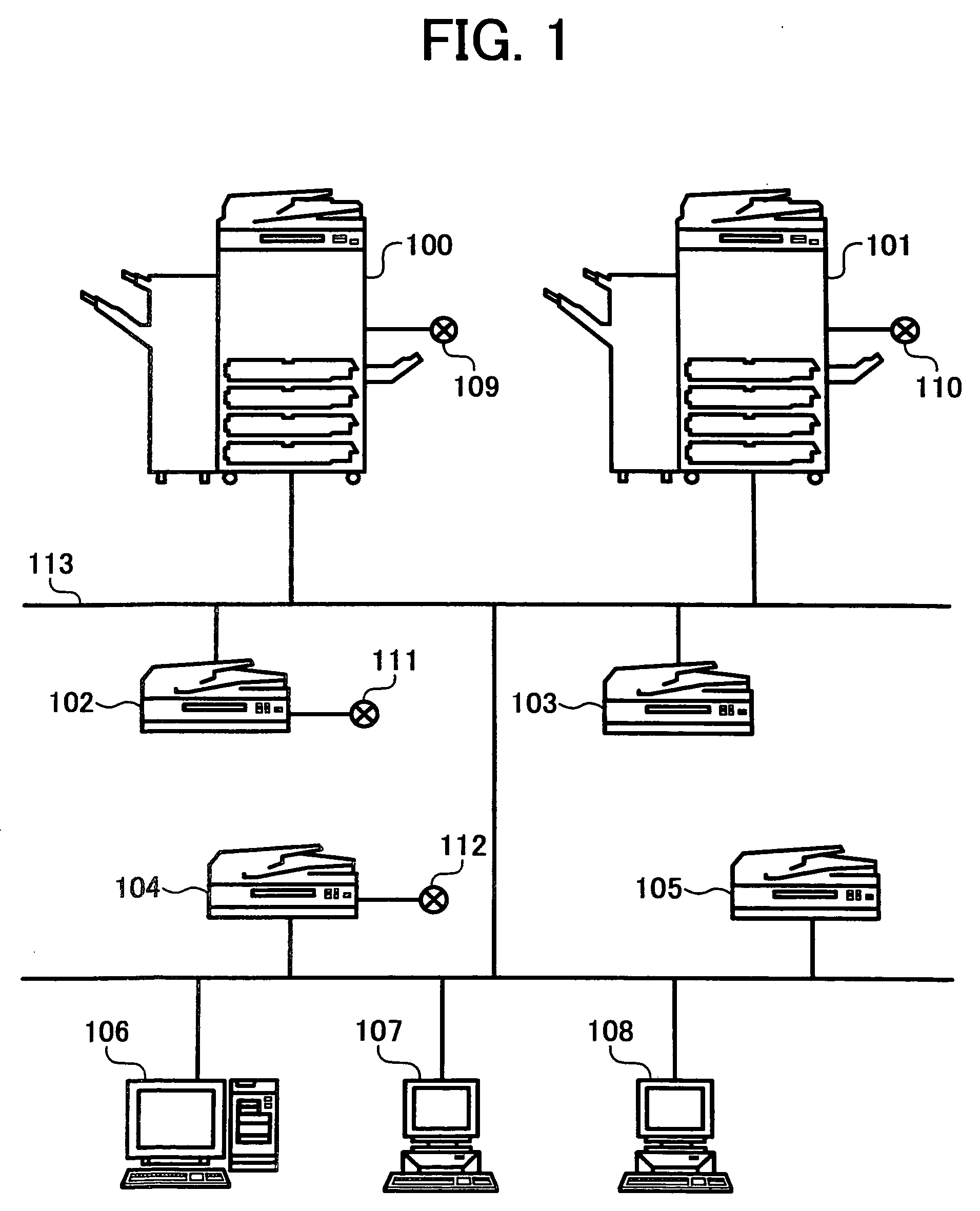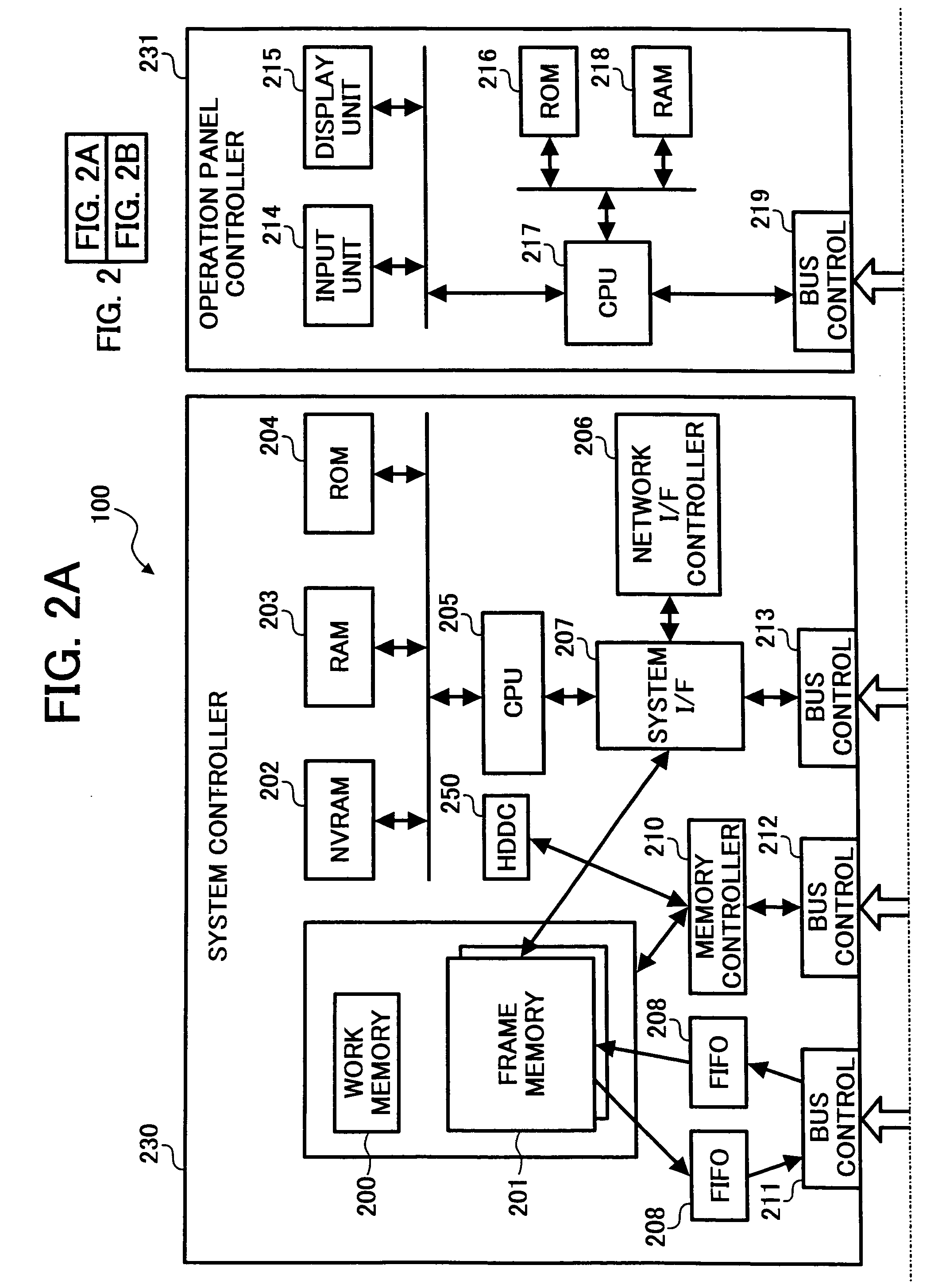Image processing apparatus
- Summary
- Abstract
- Description
- Claims
- Application Information
AI Technical Summary
Benefits of technology
Problems solved by technology
Method used
Image
Examples
first embodiment
[0060] In the first embodiment, the image processing apparatus detects an abnormality in the ground-tint-pattern recognizing unit 235, and controls the abnormality.
[0061] On the operation panel, a start button is depressed after setting an operation mode of a copy, a facsimile, or a scanner function that is necessary to read the document with the scanner. The CPU 225 sets a parameter that is necessary for the register of the ground-tint-pattern recognizing unit 235 (step S101).
[0062] After the parameter is set, the CPU 225 sets a status flag of the ground-tint-pattern recognizing unit 235. When the status flag is set, the status flag indicates that the setting of the parameter of the ground-tint-pattern recognizing unit 235 is completed normally. The setting of the status flag is notified to the image reading unit 224.
[0063] The image reading unit 224 detects an abnormality in the ground-tint-pattern recognizing unit 235 (step S102). In this embodiment, two units are used to detec...
second embodiment
[0065] A second abnormality detector confirms a signal level of a connection port with the ground-tint-pattern recognizing unit 235 at a constant cycle. When the ground-tint-pattern recognizing unit 235 is operating normally, the signal level at the connection port is always at an H (High) level. Therefore, when the signal is at an L (Low) level, it can be recognized that the ground-tint-pattern recognizing unit 235 is not connected or an abnormality has occurred in the ground-tint-pattern recognizing unit 235. Because the second abnormality detector is based on the method of detecting a signal level at the connection port of the ground-tint-pattern recognizing unit 235 as described above, it is possible to check the presence of an abnormality in the ground-tint-pattern recognizing unit 235 even when the ground tint pattern recognizing operation is carried out during the image read operation. This second abnormality detector can be also used in the second embodiment described later....
third embodiment
[0075] In the third embodiment, an abnormality in the ground-tint-pattern recognizing unit 235 is detected during a read operation, thereby controlling the abnormality.
[0076] At the starting of the document reading, an abnormality in the ground-tint-pattern recognizing unit 235 is detected (step S102), and the abnormality is controlled (step S106). This process is carried out in a similar manner to that of the first and the second embodiments.
[0077] When an abnormality is not detected at the starting time of the document reading (step S102; No), the scanner is operated to start reading the document (step S103).
[0078] Thereafter, until when the document read operation ends (step S104; Yes), detection of an abnormality in the ground-tint-pattern recognizing unit 235 is carried out repeatedly at a constant cycle (step S105). In this case, the second abnormality detector explained in the first and the second embodiments is used to detect an abnormality in the ground-tint-pattern recog...
PUM
 Login to View More
Login to View More Abstract
Description
Claims
Application Information
 Login to View More
Login to View More - R&D Engineer
- R&D Manager
- IP Professional
- Industry Leading Data Capabilities
- Powerful AI technology
- Patent DNA Extraction
Browse by: Latest US Patents, China's latest patents, Technical Efficacy Thesaurus, Application Domain, Technology Topic, Popular Technical Reports.
© 2024 PatSnap. All rights reserved.Legal|Privacy policy|Modern Slavery Act Transparency Statement|Sitemap|About US| Contact US: help@patsnap.com










